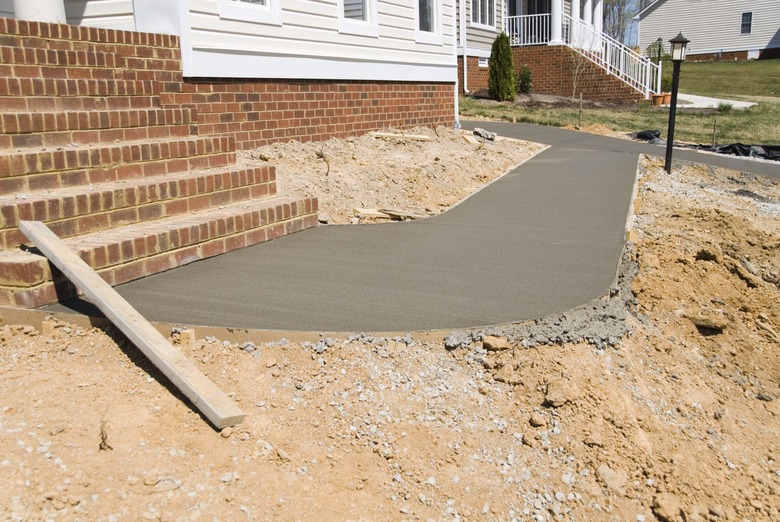What Is The Difference Between Brushed & Finished Concrete Slabs?
We may receive a commission on purchases made from links.
Brushed concrete is a type of finish, in contrast to the smooth finish that people may refer to as "finished concrete." The smooth finish is standard, but brushed concrete provides certain advantages — and also disadvantages — that you don't have with a smooth finish. Creating these finishes requires different tools.
Floating
Floating
Finishing newly poured concrete after leveling begins with a tool called a float. A float has a flat component made of a material such as metal or wood — measuring about one foot long and a few inches wide — attached to a handle in the middle. You smooth the concrete with this float, applying enough pressure to push down the aggregate, which consists of rocks and other hard particles. This allows the water inside your concrete to rise to the surface and dry.
Smooth and Patterned Finishes
Smooth and Patterned Finishes
After floating the concrete, if you want the standard smooth finish, you'll use a trowel to further flatten the surface. Instead of a completely smooth finish, you can create a pattern by moving the trowel in swirls or circles on your last go-round, or you can switch back to the float for larger and deeper swirls.
Brush Finish
Brush Finish
Dragging a house broom or a garage broom across the troweled concrete after it dries a little produces light texture lines. For a deeper texture, forgo the trowel and drag your broom across the concrete while it's still wet but after you complete the floating. As with the trowel and float, you can make creative patterns with the broom if you like.
Purpose
Purpose
Concrete slabs under buildings have a smooth finish, although some homeowners prefer a brushed finish in the garage. Brushed-finish concrete is primarily for driveways, patios and pathways — in other words, for outdoor purposes. Because many people consider the smooth surface more attractive, outdoor surfaces generally have a smooth finish as well. A brushed pattern can be both attractive and practical, however, according to the Ace Hardware website. The rough surface makes the concrete safer to stand or walk on when it's wet.
Considerations
Considerations
A brushed finish or any other concrete finish should be designed so it doesn't trap water. Standing water weakens concrete and can cause damage. The main disadvantage of brushed concrete is it's harder to clean than concrete with a smooth finish.
